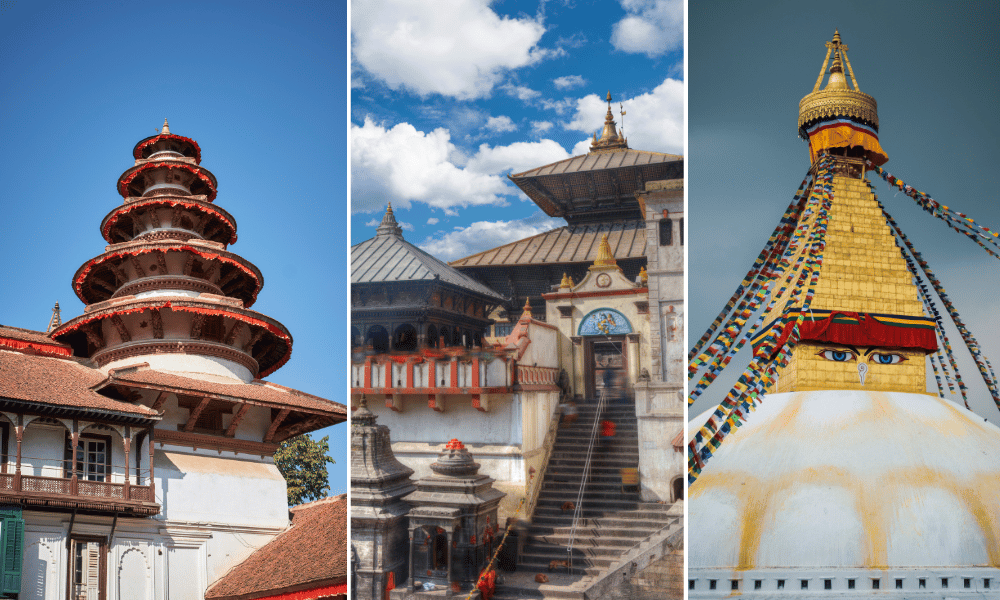Namaste! In Nepal, a land of diversity, 'Namaste' is the universal greeting that transcends its multi-ethnic, multilingual, and multi-religious tapestry. As you venture into Kathmandu, let this warm salutation be your introduction to the rich and welcoming spirit of the country. The city of culture, the city of nature, the city of temples, the city of history? Which one do you think it is? Well, it's the harmonious blend of all of it. The capital city of Kathmandu has the finest architecture, cultural heritage, and scenic beauties to offer. Kathmandu sightseeing boasts about its historical, cultural, spiritual significance, and unique local experiences one gets to feel here. The temples and monasteries, the glowing beauty of ancient royal palaces, and the hospitable people of this city are what highlight the sightseeing experience in Kathmandu.
Kathmandu showcases the captivating fusion of past and present evident in its 7 UNESCO World Heritage Sites. Explore the Durbar Squares, which were once royal palace grounds and are now bustling with temples, brilliant carvings, and stories to tell. Immerse yourself in the spiritual essence of various Hindu temples, dedicated to different deities. But wait, amidst these temples, you might encounter stupas, making you surprised at the religious harmony of faiths that define Kathmandu. Wander through the narrow alleys of the old city, where time seems to have paused. As you soak deeper into the city’s atmosphere, you can witness a fascinating contrast of ancient temples, palaces, and shrines alongside modern buildings and infrastructure. The cityscape is characterised by a flawlessly carved wooden exterior, unique architectural temples, and bustling markets coexisting with contemporary structures and developments. Yet, amidst the urban energy, ancient traditions continue to thrive. The modern life with trendy cafes, souvenir shops, and buzzing nightlife in the Thamel and Durbar Marg areas blends well with the old, ancient ambience of the city. You will be left with a profound appreciation for the city’s rich culture, history, and spirituality.
Beyond the sightseeing, Kathmandu Valley is surrounded by scenic hills and mountains seen during clear weather. On the outskirts of the city lies a national park catering to the natural and adventurous desires of travellers seeking outdoor activities such as hiking, bird watching. From three different gateways to the park, the hiking trails provide various destinations to explore. Who knows? The adventure seeker might be none other than you. Kathmandu sightseeing, which signifies cultural and historical wealth at every turn amidst the surroundings of breathtaking natural beauties, awaits your exploration.
Our Tour Package: Kathmandu Tour Package
Cultural Heritage Site Exploration
Kathmandu, the capital city of Nepal, is not merely a bustling urban centre; it's a living museum of centuries of rich heritage, spiritual devotion, and artistic brilliance. In this exploration, you will uncover the layers of history, spirituality, and artistry that define Kathmandu’s heritage sites. With its cluster of UNESCO World Heritage Sites, Kathmandu showcases the interesting marvels of the Malla dynasty, the spiritual shrines of Hinduism and Buddhism, and the cultural diversification that calls this land home. From the royal durbar squares with superbly carved palaces to serene Buddhist stupas echoing with the chants of monks and temples and the aroma of incense in the Hindu temples, each site enhances your sightseeing experience in a unique way. Among the many cultural heritage sites mentioned below are some major sites you can explore while in Kathmandu:
Kathmandu Durbar Square
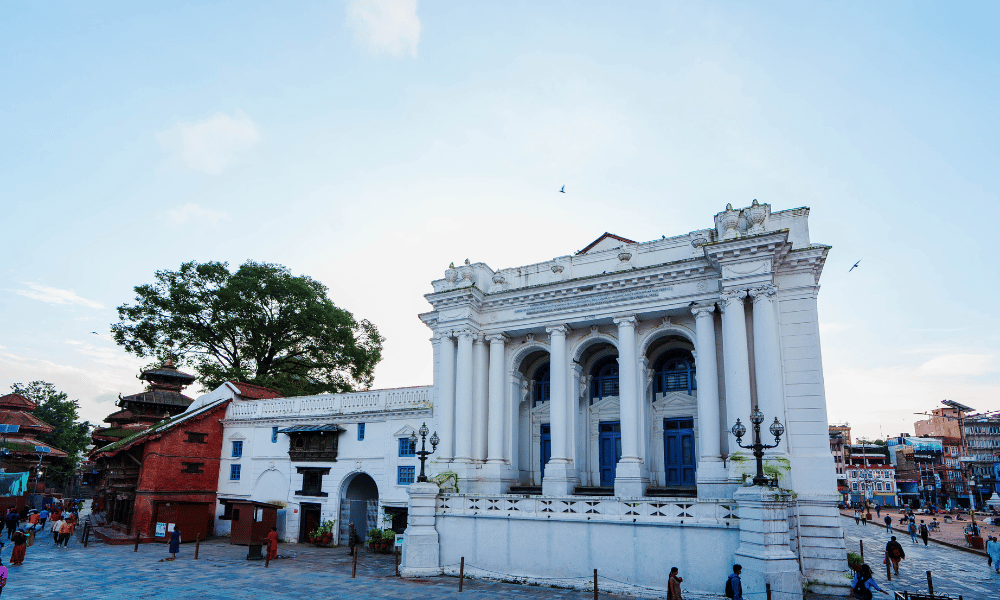
Also known as Basantapur Durbar Square and Hanuman Dhoka Durbar Square, Kathmandu Durbar Square is a mediaeval construction and a mindblowing example of wonderful workmanship. It served as the royal palace,housing coronation ceremonies, and was an administrative centre of the kingdom. Over 50 beautifully architected temples surround the squares, showcasing rich Newari architecture with pagoda style roofs, detailed woodwork, and different deities. The major attractions highlighting the area are Hanuman Dhoka Palace, Taleju Temple, Kumari Ghar, Kasthamandap, and Jagannath Temple.
Learn More: Kathmandu Durbar Square
Swayambhunath Stupa
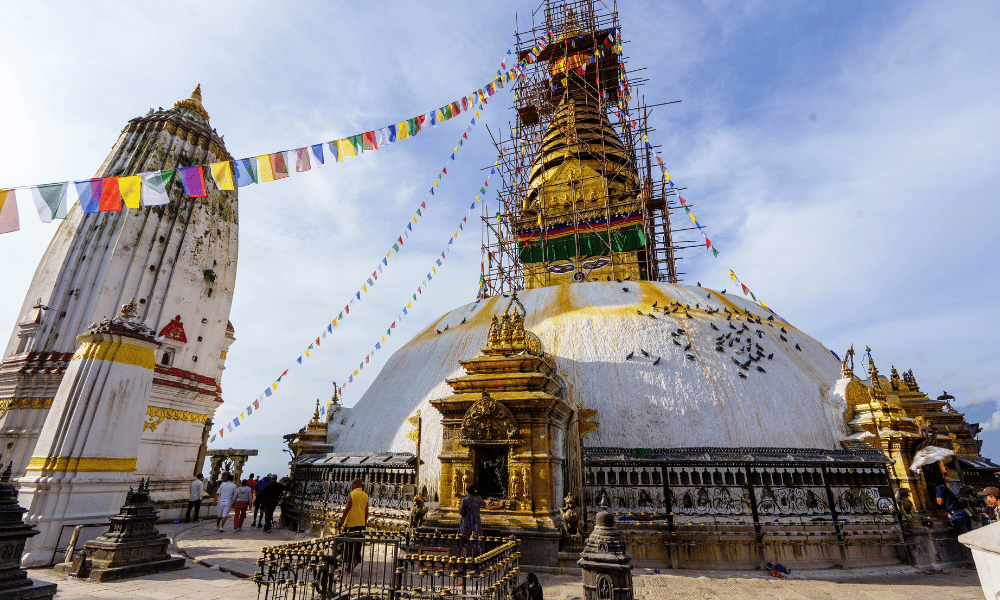
Swayambhunath Stupa, also known as Monkey Temple, is an ancient Buddhist stupa located atop a hill in Kathmandu. Although the site is considered Buddhist, the place is considered sacred by both Buddhists and Hindus. The main stupa is a whitewashed dome with a gilded spire. The stupa is surrounded by prayer wheels, which are turned by pilgrims as they walk around the stupa. There are also many other temples and shrines on the site, including a temple to Harati, the goddess of children, and a temple to Manjushree, the bodhisattva of wisdom. Due to its religious significance and stunning Kathmandu Valley view from the top of the hill, Swayambhunath is a popular tourist destination.
Learn More: Swayambhunath Stupa
Pashupatinath Temple
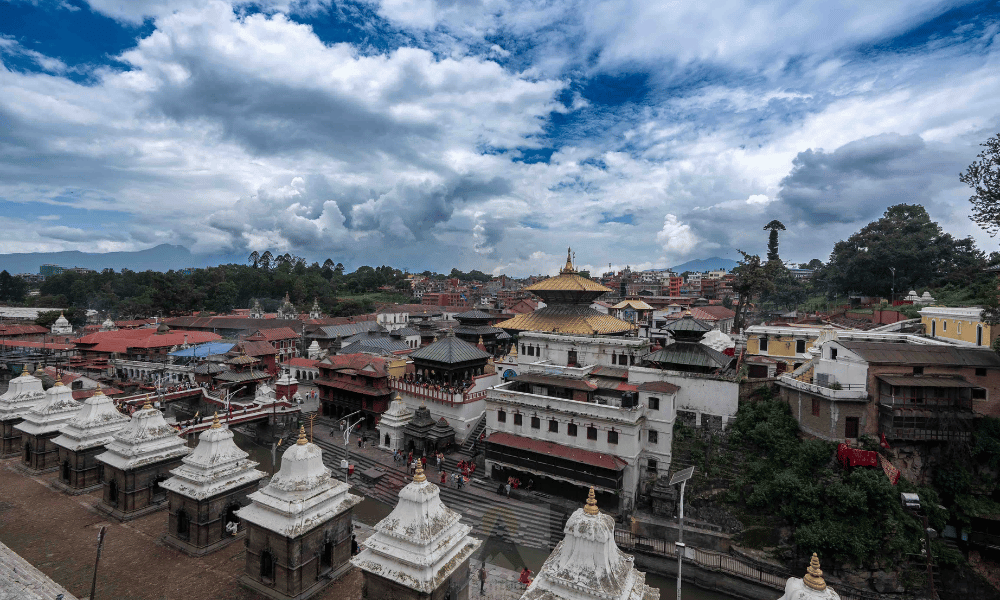
Pashupatinath temple, along the holy banks of the Bagmati river, holds historical, spiritual, and cultural significance for Hindus and is dedicated to Lord Shiva. The devotees visit here to seek blessings, offer prayers, and perform rituals. The main temple, a two-story temple, presents Nepali pagoda architecture. Its roof, decorated with copper and gold, rises majestically towards the sky. Pashupatinath is not just a single temple, it encompasses hundreds of smaller temples, shrines, ashrams, and monuments, each with its own importance. The temples also attract devotees during festivals such as Teej and Maha Shivarati, creating a mesmerising spectacle of devotion and cultural expression.
Learn More: Pashupatinath Temple
Jal Narayan Temple
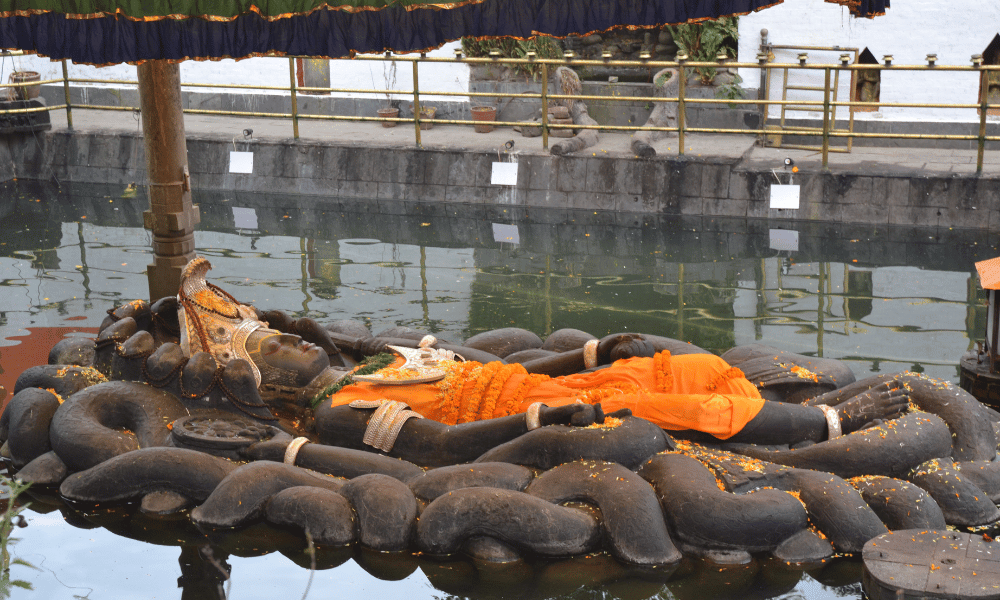
Jal Narayan Temple, dedicated to Lord Vishnu, is located on the northern outskirts of Kathmandu at the base of Shivapuri Hill. The temple is famous for its large, reclining statue of Lord Vishnu on the coils of the cosmic serpent Shesha (or Anata), which is one of the largest stone sculptures in Nepal. While the temple is worshipped by Hindus as Jal Narayan Temples, the statue bears resemblance to Buddha in a reclining posture, attracting Buddhist visitors who call it Budhanilkantha (sleeping Buddha). Haribodhini Ekadashi, marking the awakening of Lord Vishnu, gathers thousands of devotees in the temple for the darshan.
Learn More: Jal Narayan Temple
Boudhanath Stupa
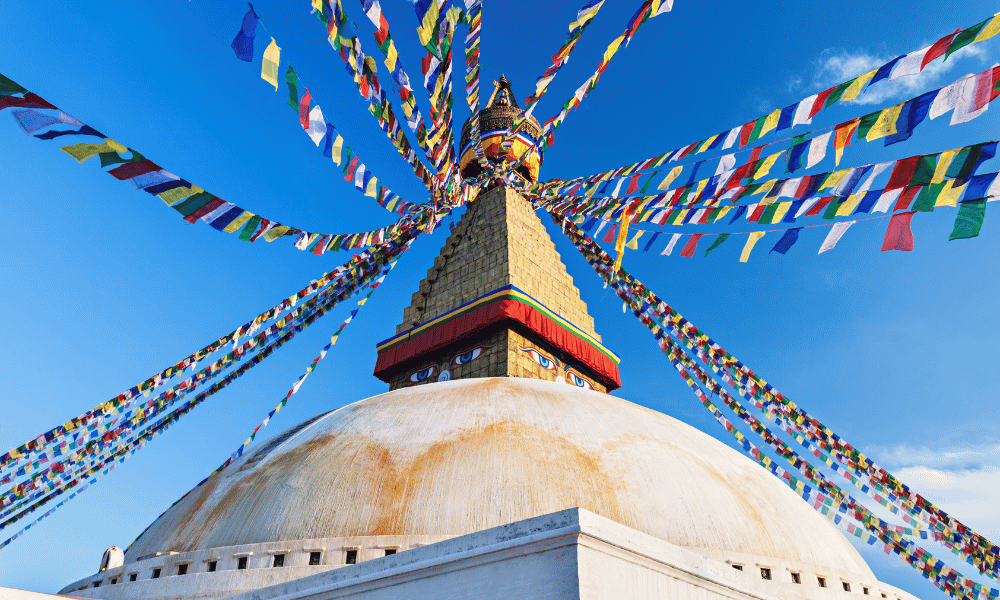
Boudhanath, one of the iconic landmarks of Kathmandu, is a focal point for Tibetan Buddhists. This massive whitewashed dome symbolising the earth rests on a square base with 13 tiers representing the stages of enlightenment. Around the base lie 108 small images of Dhyani Buddha Amitabh and 147 niches with prayer wheels. The Buddhists circumambulate around the stupa, chanting prayers and spinning prayer wheels. The stupa sits amidst a vibrant community of monasteries, local shops, and restaurants reflecting Tibetan culture.
Learn More: Boudhanath Stupa
Patan Durbar Square
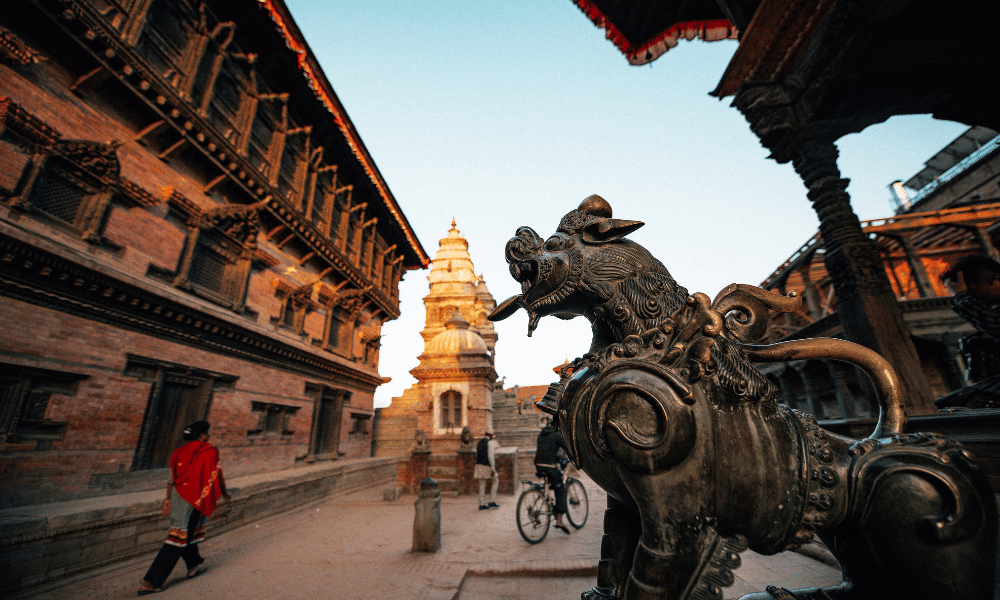
Patan Durbar Square is situated in the heart of the city of Lalitpur. The square was once the royal palace of Malla kings, surrounded by a museum, palace, courtyards, and Hitis (stone tap). The Malla Kings were enthusiasts of art, architecture, and culture, and many of the structures in the square were built during their reign. Some of the key attractions within Patan Durbar Square are the Patan Museum, Krishna Mandir, Bhimsen Temple, and Golden Temple. This site is a living museum of local lifestyles, where festivals, rituals, and traditional practices continue to thrive.
Learn More: Patan Durbar Square
Natural Immersion
Aside from the ancient hustling and bustling Kathmandu sightseeing, you can find yourself in a beautiful oasis of Kathmandu’s serenity waiting to be explored. Kathmandu Valley offers a profound experience that connects you to the city’s surrounding landscape, diverse flora and fauna, panoramic views, and a peaceful environment. From the beautiful trails of the National Park to picturesque hills, the natural wonders of the valleys connect you to its wilderness. If you are an adventure seeker, Kathmandu caters to your different outdoor desires, such as hiking, cycling, village explorations, and cable car rides amidst these natural escapes.
Shivapuri Nagarjun National Park

Shivapuri National Park is a protected area in the Kathmandu Valley that was established in 2002 AD. It is located on the northern side of Kathmandu Valley, approximately 12 km away from central Kathmandu. The park is home to several important religious and cultural sites, including the Bagdwar Cave, Nagi Gompa, Jamacho Gumba, and the Bishnudwar Temple. It also offers various outdoor options, such as hiking, trekking, and birdwatching. The Shivapuri peak, which is the highest point in the park, provides a stunning view of the Kathmandu Valley and some Himalayas. The entrance fees cost NRP 100 for Nepalese citizens, NPR 1000 for foreigners and NPR 600 for SAARC nationals.
Garden of Dreams
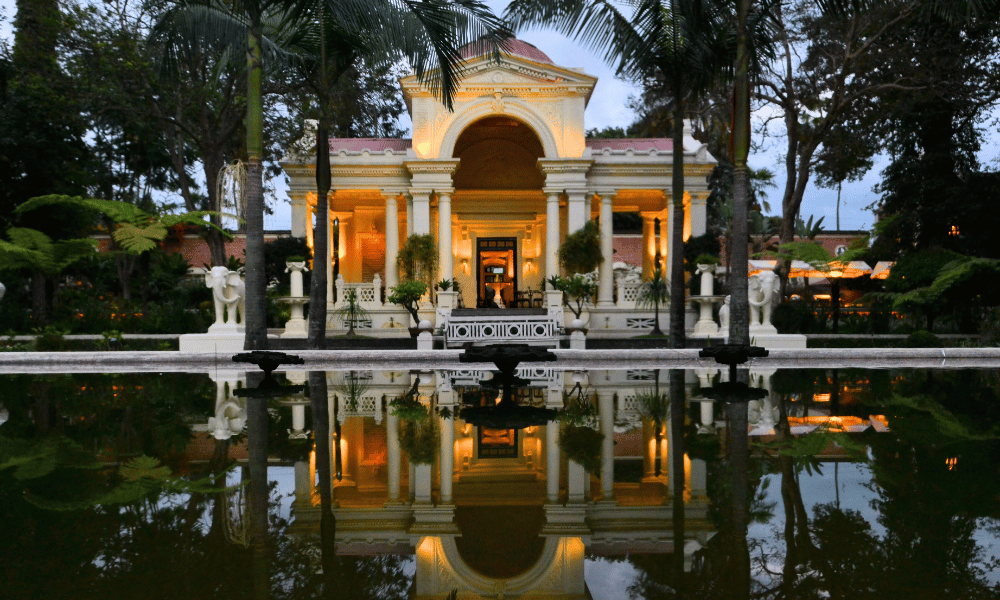
The Garden of Dreams is a serene heaven within the central tourist area of Nepal, Thamel. It is a neo-classical historical garden built in 1920 by Field Marshal Kaiser Shumsher Rana, inspired by his travels to England. The paved pathways through the garden lead you towards ornamental ponds, elegant pavillions, and charming pergolas. While the garden originally featured 6 pavillions, now there are only three. Each pavillion boasts unique architectural details and offers a distinct vantage point from which to admire the garden’s beauty. The garden also has a cafe, Kaiser Cafe, on the corner with an aesthetic and calming vibe, so you can spend quality time here.
Learn More: Garden of Dreams
Chandragiri Hills
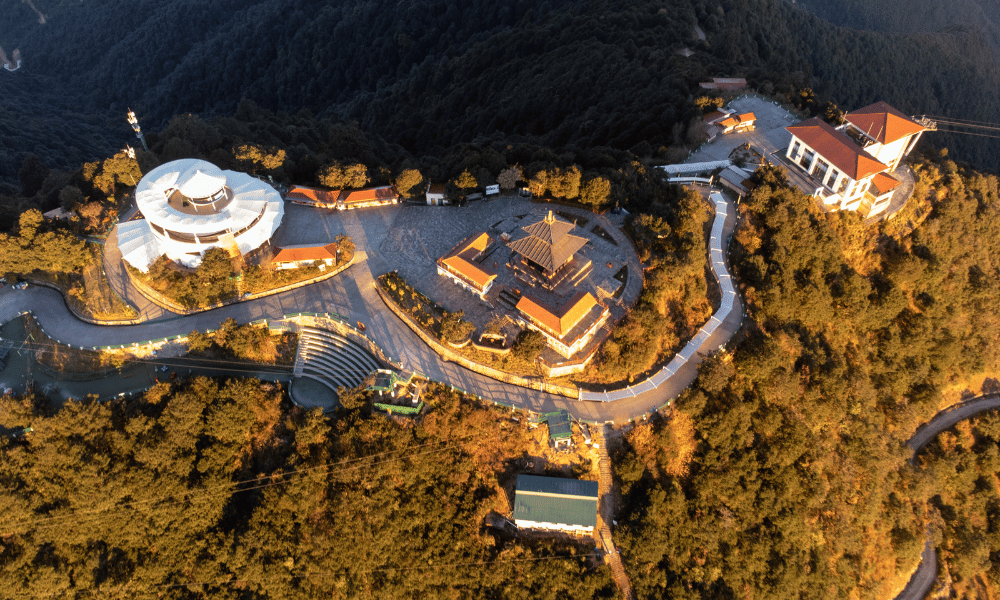
Chandragiri Hill, located in the southwestern part of Kathmandu, is approximately 15 km from the central city. The hill, at an altitude of 2552 metres above sea level, is one of the most popular tourist destinations in Kathmandu. A Hindu temple, Bhaleshwor Mahadev Temple, dedicated to Lord Shiva, is situated at the top of the hill, attracting religious devotees around the world. The breathtaking views of the Kathmandu valley and Annapurna ranges seen from the top of the hill attract natural enthusiasts to this place. Chandragiri also caters to various amusement options, such as cable car rides, kid-friendly sections, and a number of restaurants, which make it a wonderful recreational hub.
Learn More: Chandragiri Hills
Travelling through the Historical Lane
In Kathmandu, where there are ancient heritages with different histories, there are also museums narrating past stories. A museum tour in Kathmandu is not just a stroll through exhibits; it is a time travel adventure through Nepal’s history, art, and heritage. The museums in Kathmandu act as portals, transporting you through different eras. You will find yourself wandering through the halls of the museums, which once used to be the palaces of the royals. The uniqueness of each museum—some featuring skeletons, some showcasing the artistic soul of Kathmandu, some displaying the evolution of Nepali architecture—let these museums be the guides of your travel through the historical lane of Kathmandu.
Narayanhiti Palace Museum
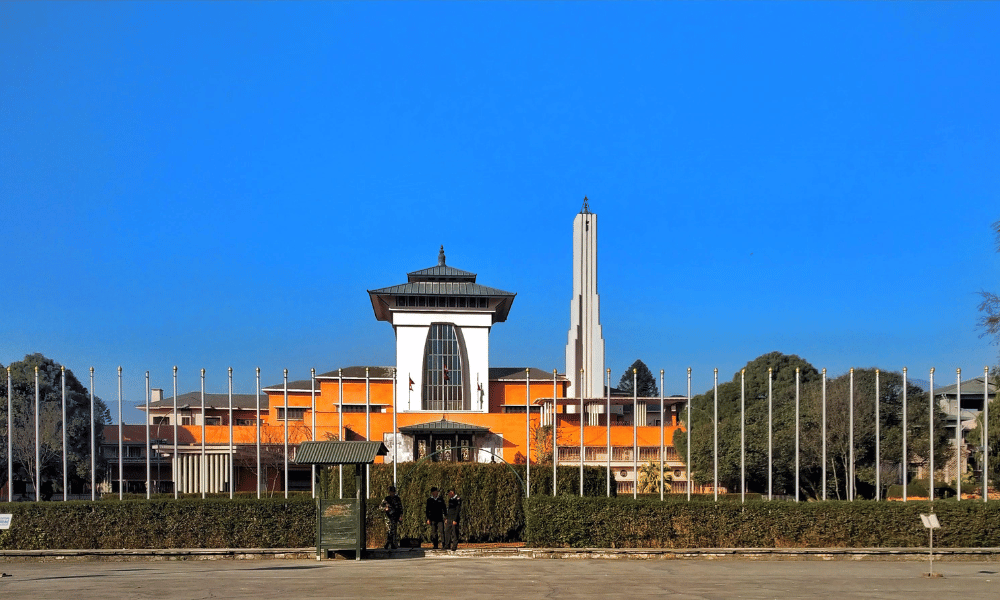
The Narayanhiti royal palace museum is a former royal palace that was converted into a museum in 2008 following the abolition of monarchy. The museum showcases the history of the Shah dynasty and the Nepalese royal family and also houses a collection of royal jewels and artefacts. The museum building itself is a magnificent example of neoclassical architecture, and its interior is decorated with lavish furnishings and artwork. The museum’s collection includes royal clothing, furniture, weapons, and the personal belongings of royal family members. The museum grounds are also worth exploring, as they offer beautiful gardens and courtyards.
In Depth Read: Narayanhiti Palace
Patan Museum
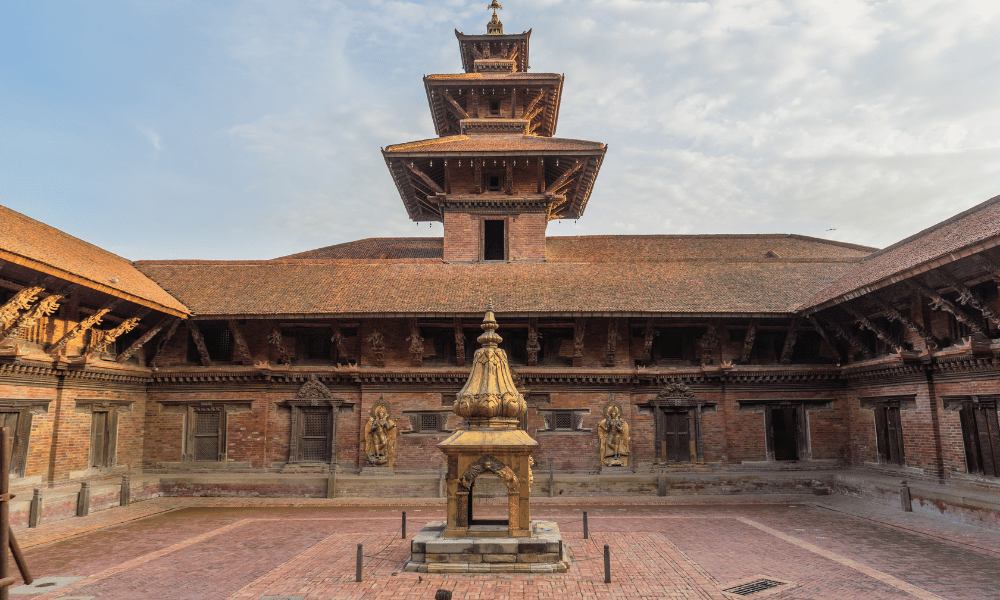
The Patan Museum is housed in a former royal palace built by the Mallas. The palace compound that houses the museum, Keshav Nayan Chowk, was built in 1734. This extensive collection showcases traditional Newari art and artefacts, including brilliant sculptures, paintings, manuscripts, and ritual objects. The museum building itself is a masterpiece of traditional Newari architecture, featuring finely carved windows, doorways, and courtyards. In addition to its cultural significance, the museum also serves as a centre for education and research.
Chhauni Museum
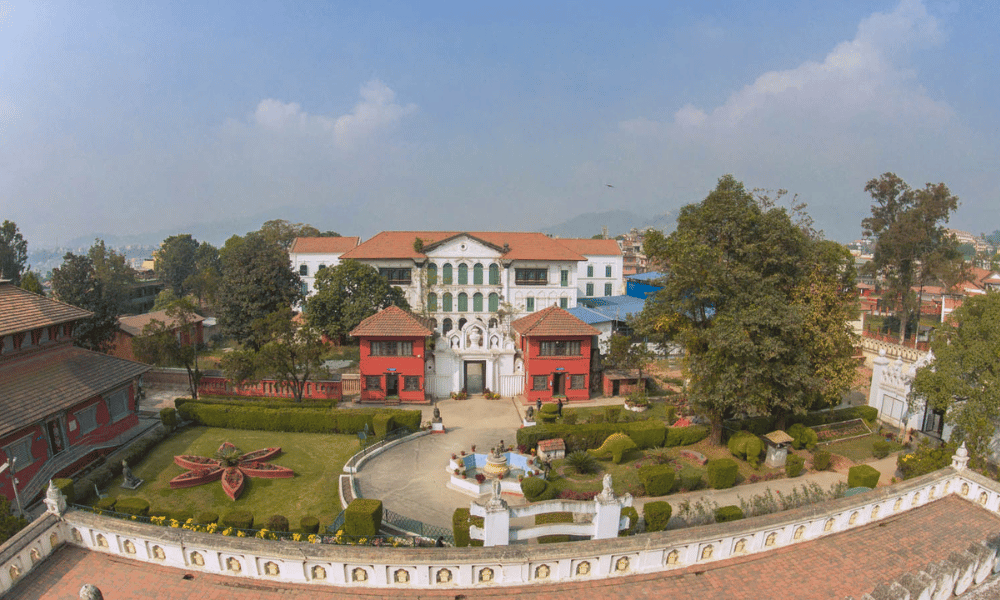
The Chhauni Museum, also known as the National Museum of Nepal, is located on the way to Swayambhunath. The museum was founded in 1928 as an arsenal museum and was initially named Channi Sikhana, which translates to “the stone house of arms and ammunition.” The museum is housed in a historical building designed by General Bhimsen Thapa in the early 19th century. The building has three sections: the Art Gallery, the Museum of Natural History, and the Buddhist Gallery. The art gallery houses a collection of Nepali and international art, including paintings, sculptures, and artefacts. The Museum of Natural History exhibits a variety of flora and fauna. Similarly, the Buddhist Gallery features a collection of Buddhist arts. This museum provides an amazing glimpse of historical Nepali art and architecture.
Learn More: Museums in Kathmandu
Beyond Kathmandu
You might have limited time, but sometimes Kathmandu sightseeing alone might not be enough for you. Fortunately, to cater to your desire to explore beyond the city limits, you don’t have to travel far. Just within an hour's drive from Kathmandu, you can escape to cultural gems such as Bhaktapur Durbar Square, Changunarayan Temple, and Namobuddha, as well as natural sights such as Nagarkot and Panauti Village. Changunarayan, said to be the oldest Hindu temple in Nepal, attracts you with its artistic and architectural significance in between the green surroundings. For moments of serenity, Namobuddha provides you with a calming spiritual vibe amidst the countryside. Similarly, you can enjoy a glorious sunset and sunrise in Nagarkot, while the rustic lanes and traditional architecture of Panauti will let you taste the authenticity of Nepal’s rural lives. However you choose to explore, it will be an exciting break from the bustling crowds of Kathmandu.
Bhaktapur Durbar Square
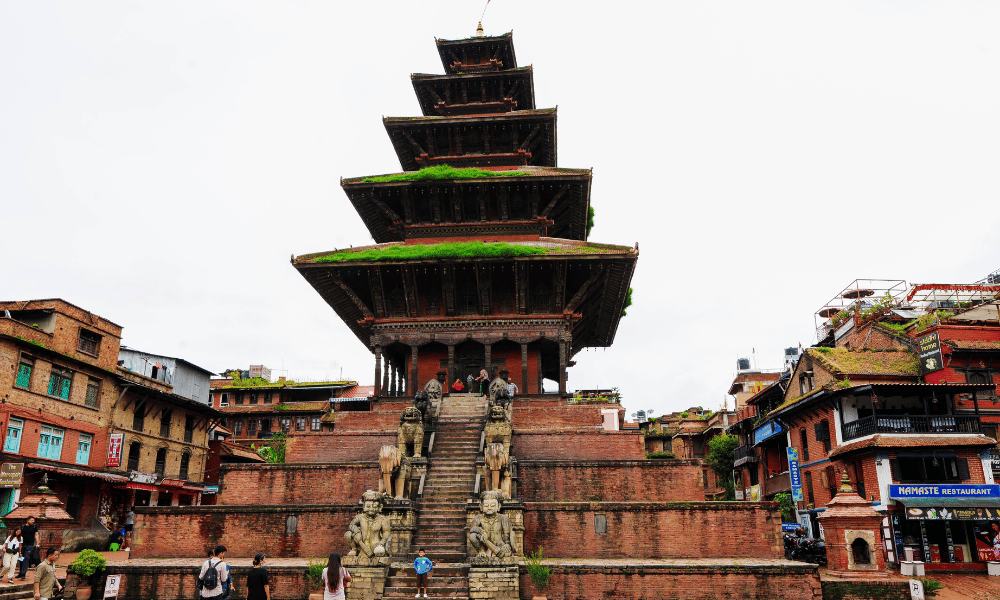
Bhaktapur Durbar Square, located approximately 12 km from Kathmandu, is a former royal palace that housed the Malla kings. Today, the square is a bustling marketplace and a popular tourist destination. The square is home to a number of impressive temples, palaces, and other historical buildings, such as the Nayatapola temple, the 55-Window Palace, the Bhairavnath Temple, and Pokharis (Ponds) such as SiddhaPokhari, Kamal Pokhari, and Na Pukhu. Besides the sightseeing, wander around the pottery square, where different local shops sell pottery items, or one can try to make the pottery items and take them back as a souvenir. Moreover, the restaurants and local eateries serve delicious Newari cuisine, savouring the taste buds of travellers. Most importantly, the delicious JuJu Dhau- King of Yoghurts, is a cherry on top for your visit.
Learn More: Bhaktapur Durbar Square
Nagarkot
Nagarkot is a village located about 32 km east of Kathmandu. It is famous for its stunning mountain views along with glorious sunrises and sunsets. The panoramic vistas of the Himalayan ranges, terraced hillsides make it a popular spot for overnight stays among nature lovers. Apart from its natural beauty, Nagarkot offers opportunities for hikers to explore the local cultures of the village.
Namobuddha Monastery
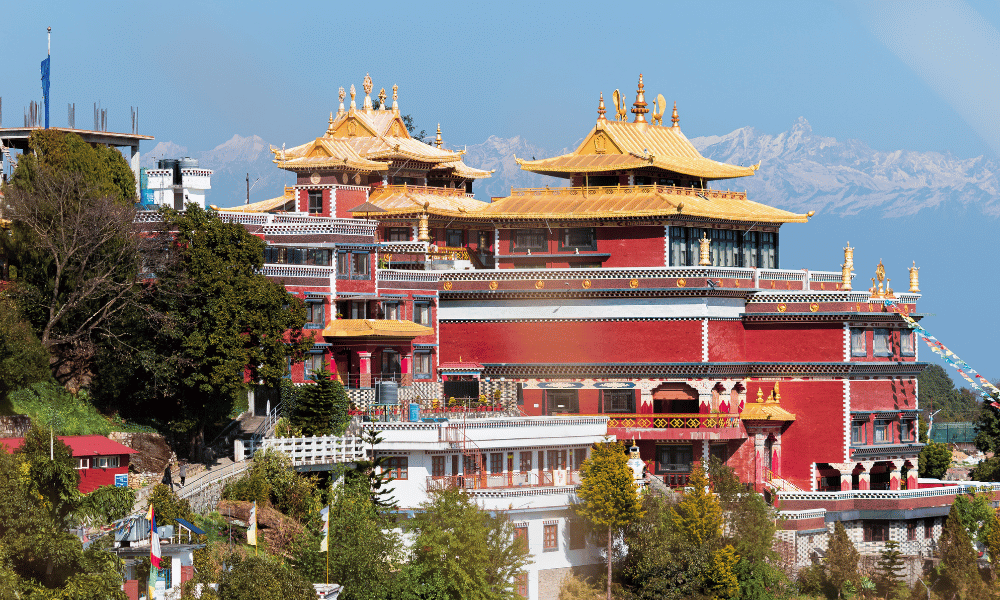
Namobuddha is a sacred Buddhist pilgrimage site located approximately 42 km from Kathmandu. It takes around 1-2 hours to reach there. It is situated atop a hill at an elevation of 1750 metres, offering stunning views of the surrounding valleys and mountains. A stupa is placed here, which attracts Buddhist pilgrims who seek blessings from here. Next to the stupa is a monastery, Thrangu Tashi Yangtse Monastery, which is home to over 400 monks and is a centre for Buddhist learning and practice. Visitors to the monastery can observe the monks engaged in their daily activities, such as prayers, meditation, and study. Besides being culturally important, the Namobuddha is also popular for hiking, where staircases are used to climb the top.
Learn More: Namobuddha Monastery
Changunarayan Temple

Changunarayan Temple, believed to be the oldest temple in Nepal, amidst the green hills, is an ancient Hindu temple dating back to the 4th century AD. The temple is dedicated to Lord Vishnu, specifically in his incarnation as Narayan. This two-story pagoda style temple boasts woodwork, gilded roofs, and coloured deities painted on its walls. The main shrine is surrounded by smaller shrines, statues, and stone carvings. Each detail, from the carvings on the doorways to the stone sculptures of mythical creatures, narrates a story of the temple’s rich history and religious significance. The cultural heritage site in the natural setting is what makes it even more attractive.
Learn More: Changunarayan Temple
Local Life and Experiences
Exploring the local life of Kathmandu offers a fascinating glimpse into the everyday rhythm of Kathmandu city. With major inhabitants, Newar populates the city while maintaining harmony with people from other communities such as Brahmin, Chettri, Magars and others Kathmandu welcomes you with warm hospitality. Throughout the year, Kathmandu comes alive with festivals and events, from the joyous celebration of Dashain and Tihar to the street Jatras of the Newar community, such as Indra Jatra and Gai Jatra. Amidst the bargains in local markets, you can explore the treasures woven with handcrafted souvenirs and gifts, while the aroma of spices and local foods awakens your senses. In every corner, from the bustling squares to the hidden courtyards, Kathmandu’s local life is a celebration of diversity, creativity, and community spirit, offering you an immersive experience.
Local Inhabitants
Alongside sightseeing, the local inhabitants offer unique perspectives and experiences that go beyond the typical tourist itinerary. Even more uncommon when it comes to Kathmandu, since it has a mixture of cultures coming from different parts of the country as its proud capital city. The Newars, considered the indigenous people of Kathmandu Valley, have shaped Kathmandu's rich culture and heritage for centuries. They possess a unique language and a distinct identity, marked by their traditional attire, cuisine, and festivals. Their active participation in religious ceremonies and festivals draws visitors worldwide. Side by side, other cultural groups like Brahmins, Chettris, Tamangs, Gurungs, and Sherpas showcase the multicultural harmony in the valley, bringing their own cultural vibrancy and traditions. The cultural harmony among the mixed cultures and religions is what makes Kathmandu a prominent tourist attraction.
Festivals and Events
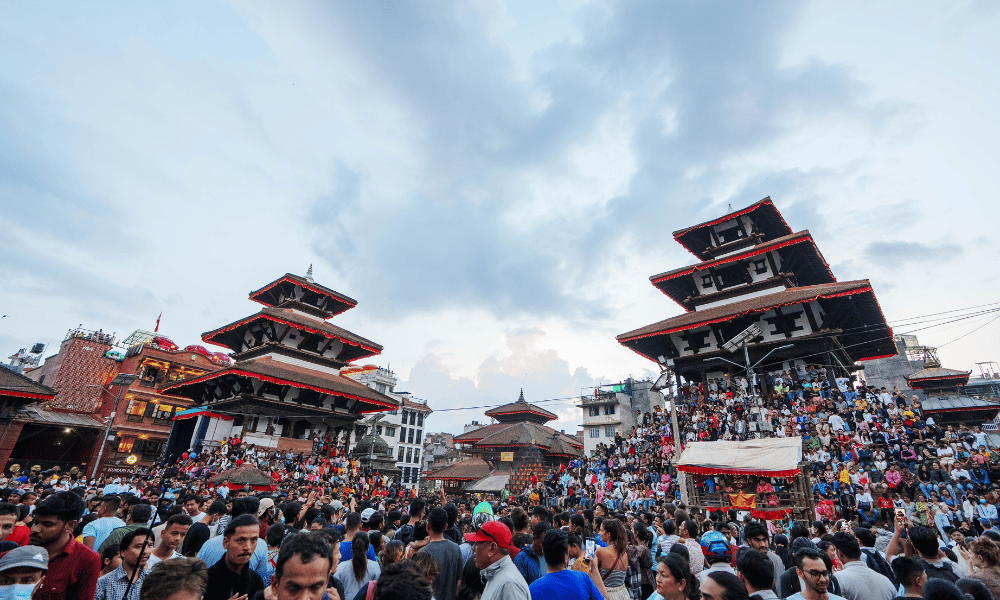
Kathmandu celebrates festivals more than the days in a year. It is not a random phrase, but an interesting fact. While not mathematically accurate, it perfectly captures the spirit of this cultural diversity. With the unity of different culturally diverse people living in this city, the city participates in the celebration of festivals not only of their own culture but others as well. Witnessing how different communities come together, transcending cultural boundaries, to celebrate each other's traditions is an experience unlike any other. Immersing yourself in the festive spirit alongside the locals enhances your experience with colours, music, and traditional songs and dances. If your schedule matches the festive season,the major festivals and events that you can witness in Nepal are: Indra Jatra, Dashain, Holi, Bisket Jatra, Lhosar, and the Nepali New Year. Witness vibrant chariot processions and masked dance in Indra Jatra, experience the prominence of the biggest festival of Nepal, Dashain, and unleash your inner child with the colourful festival, Holi. Here’s how you can enjoy various festivals in Kathmandu in the way you like, as every festival celebrated has something to offer for you.
Related Read: Nepal Festival Calendar
Shopping (Local Markets)
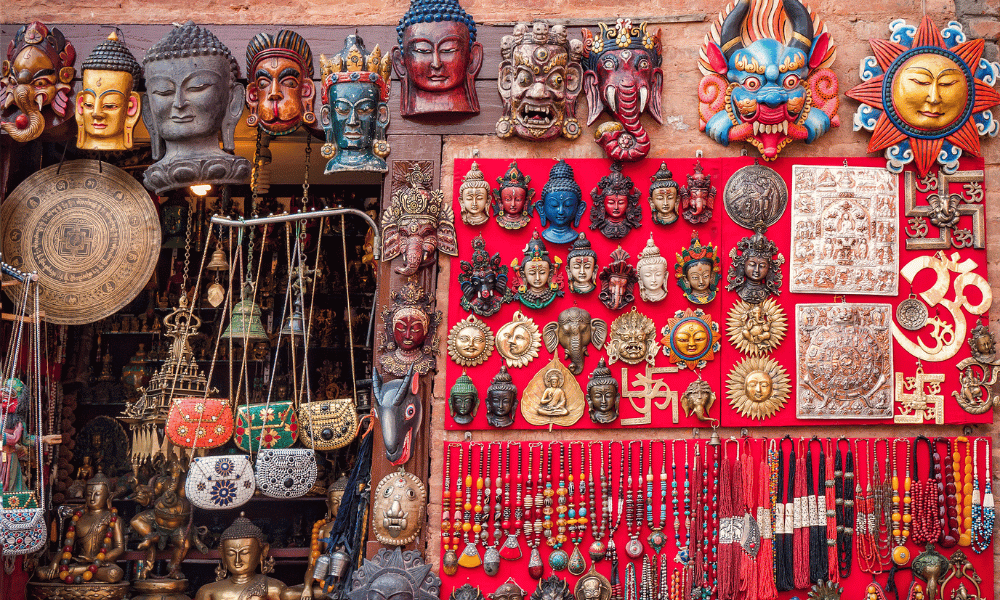
A unique exploration awaits in the vibrant bazaars and alleyways of Kathmandu, offering a shopping experience as you see people bargaining in price. Nowhere to be seen, the chaotic city offers shopping in various markets in Kathmandu. Thamel, the major tourist hub, is famous for its bustling streets lined with shops selling everything from traditional Nepali handicrafts to trekking gear, clothing, jewellery, and souvenirs. Similarly, Asan Tole is one of the oldest marketplaces in Kathmandu, offering a wide range of goods from spices, herbs, and other local productions. For those interested in contemporary art and fashion, Kathmandu boasts several galleries that showcase the work of local designers and artists. In fact, if you want an upscale shopping experience, Durbar Marg is home to different luxury branded shops.
Learn More: Shopping in Nepal
Food and Dining
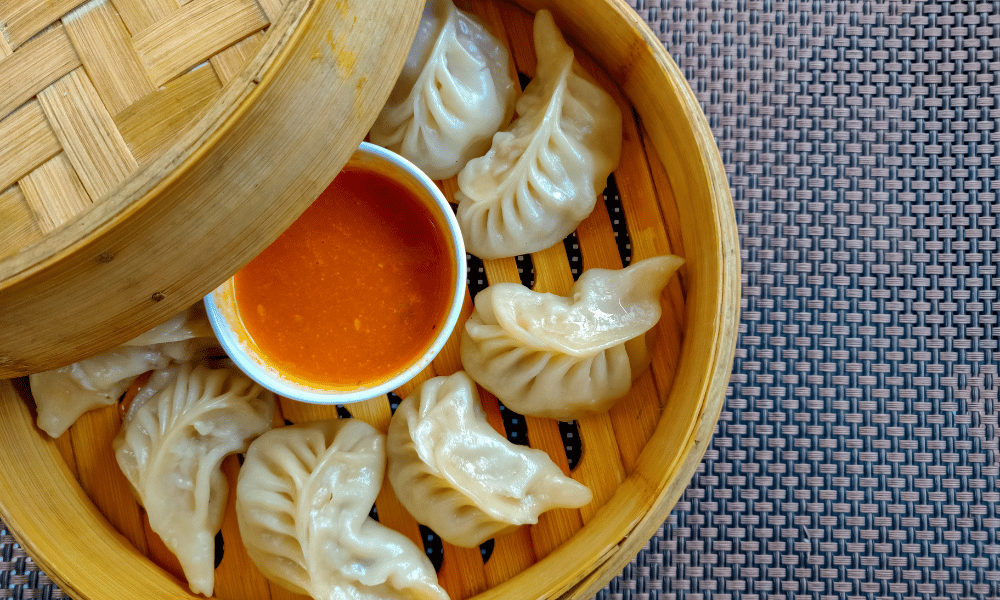
During the sightseeing, of course, the flavours of Kathmandu can’t be underestimated. Foods in Kathmandu reflect Nepal’s rich culture and diverse ethnic backgrounds. From local Nepali cuisine to different continental cuisines, savouring foods in Nepal is a unique experience. Firstly, the heart of Nepali cuisine, Dal Bhat, a lentil soup paired with rice and side dishes like vegetables and pickles, is a comforting and flavorful staple enjoyed throughout the day by Nepali people. Momo, steamed dumplings filled with savoury fillings like minced meat and vegetables, is a popular food in Kathmandu for a quick and hearty bite. Besides this, you can also find authentic Newari cuisine around the Durbar Squares to satisfy your appetite. You can try those foods around Thamel with cosy cafes and restaurants, Durbar Squares serving authentic cuisines, and Boudhanath catering to your continental desires. When dining out in Kathmandu, the local eateries provide you with the best local specialities. However, be mindful of food hygiene, especially if you’re trying street foods.
Also Read: Pure Veg Restaurants In Kathmandu And Pokhara | Nepalese Food
Our Picks for Kathmandu Tours
The Kathmandu sightseeing tour is further divided into two parts, that is Kathmandu full day sightseeing and Kathmandu half day sightseeing. Depending upon the time interval you will take to visit a particular place, the full day of sightseeing comprises four places. Furthermore, Kathmandu half day sightseeing includes two places to visit.
Kathmandu Full Day Sightseeing
Kathmandu's full day sightseeing includes prominent landmarks that can be covered in a day during working hours. Generally, it includes four major sites, such as Pashupatinath Temple, Boudhanath Stupa, Kathmandu Durbar Square, and Swayambhunath Temple. If you have time and want to visit Chandragiri, you can add it to your day of sightseeing, which is on the outskirts and takes an hour to reach.
Our Picks for Kathmandu Full Day Tour
-
Temple Full Day Sightseeing (Pashupatinath, Jal Narayan, Banglamukhi, Patan Durbar Square)
-
Classic city Full Day Sightseeing (Kathmandu Durbar Square, Pashupatinath temple, Boudhanath and Swayambhunath Stupa)
-
Heritage Full Day Sightseeing (Kathmandu Durbar Square, Patan Durbar Square, Bhaktapur Durbar Square)
-
Exotic Full Day Sightseeing (Changu Narayan Temple and Bhaktapur Durbar Square)
-
Chandragiri Full Day Sightseeing
The suggested picks cater to your various interests and preferences, from iconic temples to ancient squares and breathtaking viewpoints. Ultimately, regardless of the option chosen, a full day of sightseeing promises a satisfactory and fulfilling experience in Kathmandu.
Kathmandu Half Day Sightseeing
Kathmandu half day sightseeing comprises the half-day activities that you can do. It basically lasts 5-6 hours, in which you can cover two places. In Half-Day sightseeing, you can visit two places in general. You can choose two places out of the major sightseeing sites, such as Basantapur Durbar Square, Pashupatinath Temple, Boudhanath Stupa, and Swayambhunath Temple.
Our Picks for Kathmandu Half Day Tour
-
Temple half day sightseeing (Pashupatinath temple, Jal Narayan temple)
-
Heritage half day sightseeing (Bhaktapur Durbar Square)
Note: The Bhaktapur Durbar Square is the biggest of all the three ancient royal palaces. It takes a little longer than the other two palaces. So, Bhaktapur Durbar Square is a half-day sightseeing programme.
-
Exotic city half day sightseeing (Kathmandu Durbar Square and Boudhanath temple)
-
Historical half day sightseeing (Narayanhiti Royal Palace, Kathmandu Durbar Square)
The above mentioned half day options provide a glimpse into the city’s rich cultural heritage and historical significance. Each half-day of sightseeing allows visitors to make the most of Kathmandu in their short time.
Travel Tips
Planning a sightseeing trip requires thoughtful consideration and attention to detail to ensure a fulfilling and hassle-free experience and to make the most of your time exploring the attractions the trip has to offer. With its numerous historical sites, temples, and bustling markets, Kathmandu offers a wealth of experiences that can overwhelm unprepared travellers. Planning allows you to prioritise key landmarks in Kathmandu, ensuring you don’t miss out on iconic sights. Furthermore, a sightseeing tour in Kathmandu requires consideration of factors such as transportation options, your ideal time to visit, accommodation options and bookings, and health and safety tips, so that you can prepare for the unexpected you might encounter during your trip.

Transportation Tips
Transportation assists you in accessing the bustling streets of Kathmandu so that you won’t get lost and you can utilise your exploration time efficiently. You can use various means to explore Kathmandu city, such as taxis, rickshaws, and public buses.
Taxis: You can find taxis anywhere in the city with easy convenience, but they might be costly.
Rickshaws: Traditional rickshaws are convenient for covering short distances to navigate the narrow streets.
Public Vehicles: The public vehicles of Kathmandu are the most affordable but can be crowded.
Even though most of the sightseeing areas are within a short walking distance, some sites require transportation. However, you can contact a Kathmandu based travel company that can make all these arrangements for you to enjoy your trip without having to worry about anything.
Best Time to Visit
In general, Kathmandu experiences four different seasons: the spring season, the monsoon season, the autumn season, and the winter season. The ideal time to visit Kathmandu is considered autumn (Sept-Nov) and spring (Mar-May). However, the time depends on your personal preferences, schedule, travel style, and interests in visiting.
Spring Season (March-May): Spring presents a pleasant temperature around 20°C to 30°C, making it one of the ideal seasons for Kathmandu sightseeing. Moderate crowds make the sightseeing comfortable.
Monsoon Season (June-August): The monsoon invites heavy rainfall lasting for hours to days. It is an ideal season only for those who don’t mind the rain. This is a budget friendly season with fewer crowds.
Autumn Season (September-November): This season is ideal for travellers, with an average temperature of around 22°C. As it is considered the peak season for the number of tourists, the price of flights, accommodation, and activities increases.
Winter Season (December-February): Maximum temperature around 17°C. Winter offers chilly but sunny days with fewer crowds, making your sightseeing comfortable.
Also Read: Best time to visit Kathmandu and Pokhara
Accommodation Tips
The best accommodation for you depends on your priorities. Do you prioritise convenience and a central location, or a quieter atmosphere and cultural immersion? Do you prefer budget options or want a luxury tour? By considering your preferences and factors affecting the accommodation, such as seasonality, budget, and availability, you’ll find the perfect accommodation for your type. Moreover, to consider all these factors and get the accommodation suitable for you, you need to prepare well and make a reservation for it.
Budget
The accommodations in Kathmandu range from budget friendly options to luxury hotels. The budget also differs by the season you choose to travel; peak seasons have the highest prices. According to your budget, aligned with seasonal offers, you can find the most affordable accommodations, from hostels to star rated hotels.
Availability
The availability is affected by the time of your visit. As different seasons in Kathmandu invite different tourist. In peak season, it will be difficult to get accommodation of your type; hence, pre arrangements are required for this. The flow of tourists is also impacted by festival seasons, which invite large numbers of tourists.
Location
Whenever you choose an accommodation, make sure to get informed about its location as well. Even though it's Kathmandu, your location and sightseeing areas might have a huge distance, and getting there will eat up all of your sightseeing time. However, your preferences for the environment you like to stay in also matter. Most areas, such as Thamel, Durbar Marg, and Naxal, are recommended, as these are the major tourist hubs.
Type of Accommodation
Kathmandu features a wide range of stay options, from hostels, guesthouses, boutique hotels, homestays, and luxury hotels. You have various choices for where to stay as per your budget, length of stay, and location accessibility.
Make sure to book early to get the best deals on the suitable and comfortable stay of your choice. If you don’t want to go through all these hassles, you can also make arrangements through a travel agency like us. We would be pleased to be part of your wonderful journey in Kathmandu.
Health and Safety tips
Anywhere you go, your health matters the most. To make sure that you are safe throughout the journey, always be prepared and well informed about the possible risks and challenges of your trip. The health and safety tips highlight matters such as travel insurance, medications, food, local environments, and so on.
Travel Insurance
It doesn’t matter how careful you are; getting travel insurance covering medical emergencies and lost luggage provides you with extra protection for your health and the items you carry.
Medications
There might be some regular medications you take. Be sure to carry the prescription medications you require. Even though there are medical facilities, you never know what can happen. Better be careful beforehand.
Food and Water
Don’t mistake having food and open water from anywhere, any restaurant, as you might not be adaptive to the food of every place. You might suffer from food poisoning. You can search for dining options on the internet, review them, and choose as you like.
Besides these, always be aware of the local environment you are in. Be careful of scammers, thieves, and do’s and don'ts while visiting religious sites. It's best if you hire a local guide who can inform you about possible risks and give you proper insights into the area.
Useful Read: Travel Information For Indians Visiting Nepal
Conclusion
Kathmandu is a beautiful city that demands to be explored. It's a journey through time, culture, and spirituality. From the towering temples to the bustling bazaars, Kathmandu offers a unique blend of ancient and modern experiences. As you soak deeper into the city’s local environment, you will find Kathmandu is not all about what you see but how you feel about the city’s whole vibe.
At the heart of Kathmandu’s allure are its majestic temples and stupas, each standing tall and proudly carrying the city’s rich history. The superbly designed structures like Pashupatinath and Durbar Squares bear witness to centuries of devotion and craftsmanship. But Kathmandu is more than just a testament to artefacts; it is also a testament to the energy of local people and the rhythm of everyday life. In the local market of Asan and Indra Chowk, as you see the locals selling traditional textiles and sense the aromatic spices of local cuisines, you can feel the lively spirit of the city. Yet aside from the busy environment, the natural settings on the outskirts compete to enhance your overall sightseeing experience.
While the streets of Kathmandu may be chaotic, the warmth of its people shines through. From the friendly shopkeepers to the friendly locals, you can find a true connection that transcends language and culture. This blog is just a taste of Kathmandu’s wonders, a mere appetiser to the feast of experience that awaits. You are always welcome to experience Kathmandu, Nepal, beyond the pages of this blog.

